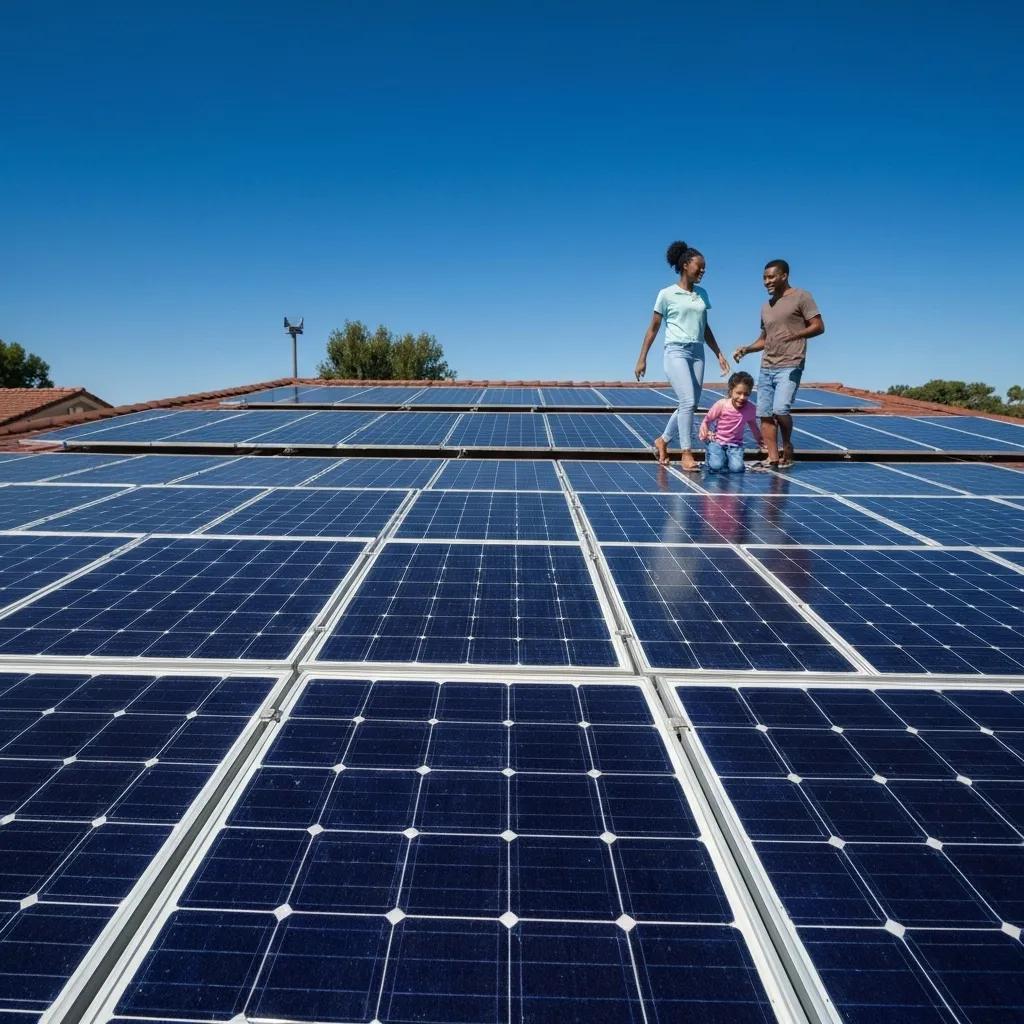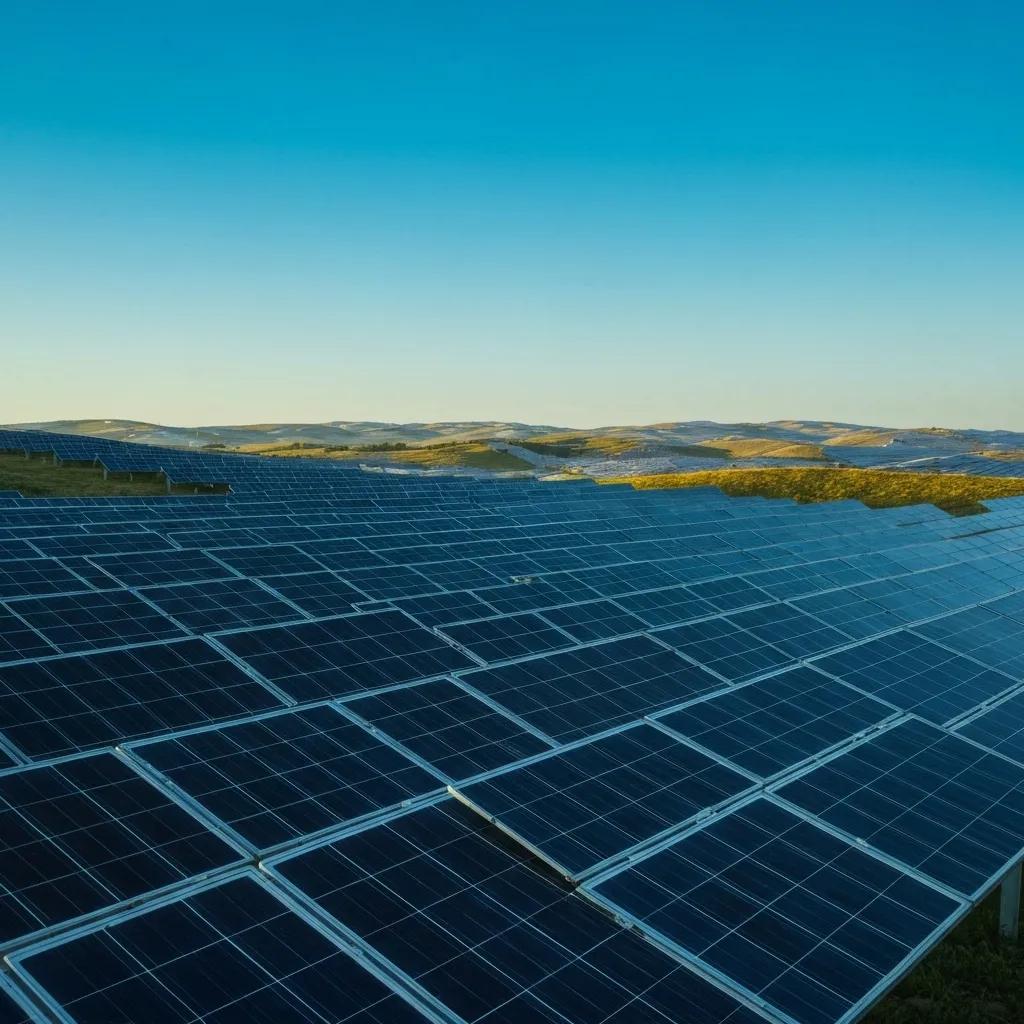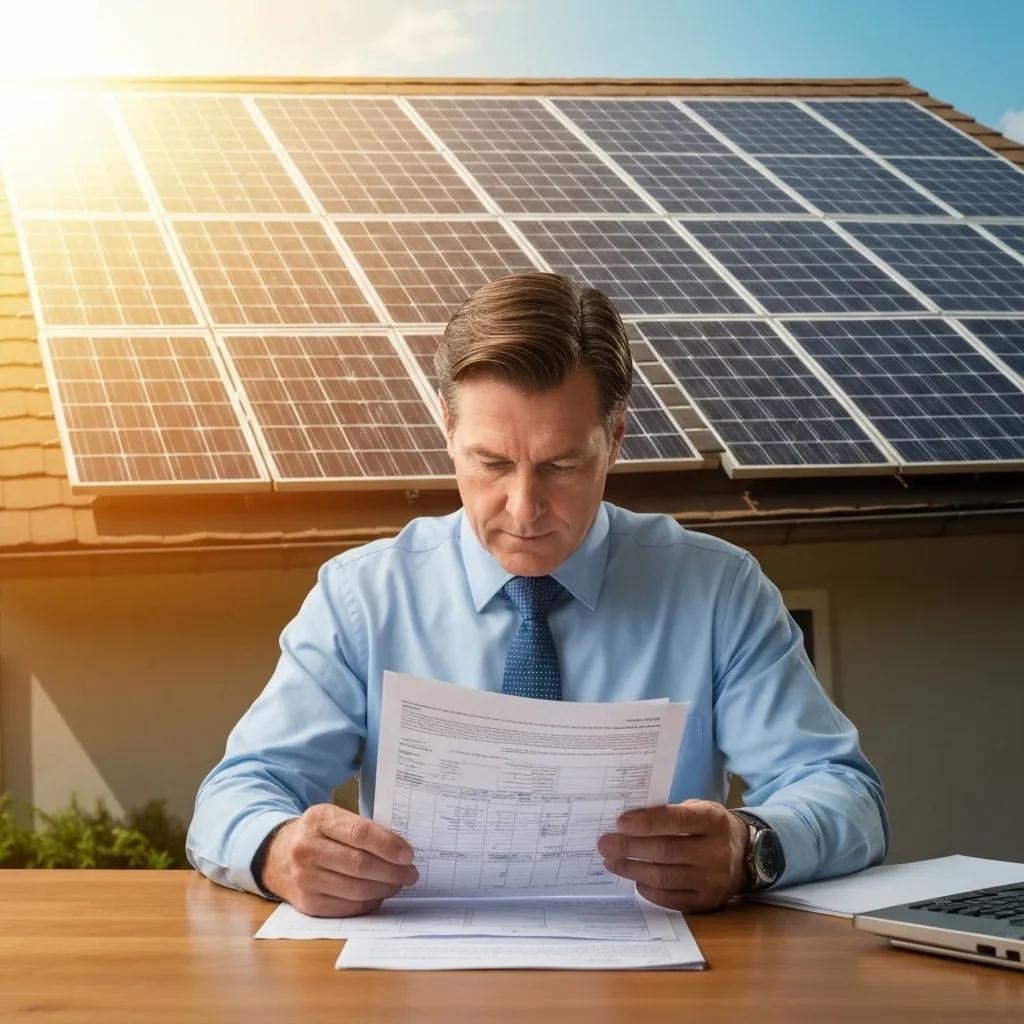Go Solar Direct: Get Unbeatable Solar Panel Prices Starting at $2.5/Watt!
Get It Before the 2025 Federal Tax Credit Ends

Solar panels from Go Solar Direct start at an exclusive rate of $2.5 per watt before applying the federal tax credit, unlocking immediate energy independence and long-term savings. This unbeatable price reflects direct sourcing, streamlined installation, and bulk-purchasing efficiencies that cut out intermediaries. You’ll learn how cost per watt translates to total installation expenses, how to claim the 30 percent Investment Tax Credit before December 31, 2025, the quality-driven Go Solar Direct installation process, projected lifetime savings and home-value uplift, available financing models, and what warranty protections to expect. By the end, you’ll understand why acting now secures maximum value and how Go Solar Direct’s transparent pricing and expert service deliver a superior solar investment.
Unbeatable Solar Panel Pricing: $2.50/Watt from Go Solar Direct

The cost per watt defines your solar system’s budget foundation by dividing total equipment and labor costs by the system’s rated capacity. At $2.5/Watt before incentives, a 6 kW array costs $15,000 up front, and scales linearly with size while including panels, inverters, mounting hardware, permitting, and labor. Lowering that figure depends on the 30 percent federal credit and local rebates.
How Is Solar Panel Cost Calculated Per Watt?
Solar panel cost per watt equals the combined price of modules, balance-of-system equipment, and installation divided by the system’s DC capacity.
- Definition: Price per watt = (Equipment + Installation + Permits) ÷ System size (watts)
- Mechanism: Bundles all hard and soft costs into a single metric
- Benefit: Enables direct comparison across providers and system sizes
This metric simplifies budgeting and shows how system upgrades—like higher-efficiency panels—affect overall expenses.
What Is Included in Go Solar Direct’s $2.5/Watt Price?
Before tax credits, $2.5/Watt covers:
- Panels – Monocrystalline modules with 20–22 percent efficiency
- Inverters – Tier-one string or microinverters
- Mounting – Roof connections and rails
- Labor & Permits – Certified installers, local approvals
- System Design – Roof assessment and engineering plans
This comprehensive package ensures no hidden fees, delivering true “all-in” pricing that makes budgeting straightforward.
How Does System Size Affect Your Total Solar Installation Cost?
Introduction to cost scaling: As capacity grows, total price increases proportionally while per-watt costs may slightly decrease due to volume discounts.
| System Size (kW) | Estimated Cost Before Incentives | Cost After 30 % ITC |
|---|---|---|
| 4 kW | $10,000 | $7,000 |
| 6 kW | $15,000 | $10,500 |
| 10 kW | $25,000 | $17,500 |
Larger systems yield deeper utility bill offsets, making lifetime savings more substantial.
Which Factors Influence Your Final Solar Panel Price?
- Panel Efficiency determines required roof area.
- Inverter Type affects system monitoring and flexibility.
- Roof Complexity adds labor time and specialty hardware.
- Local Labor Rates & Permitting Fees vary by region.
- Battery Storage increases total investment and resilience.
Understanding these factors helps you tailor your solar solution for optimal ROI and performance.
How Can You Maximize Savings with the 2025 Federal Solar Tax Credit?

The 30 percent Federal Solar Investment Tax Credit (ITC) reduces your qualified solar investment by nearly one-third, directly lowering your tax liability for systems placed in service before December 31, 2025.
What Is the 30 Percent Federal Solar Tax Credit and How Does It Work?
- Definition: A dollar-for-dollar reduction in federal taxes owed.
- Mechanism: Claim using IRS Form 5695 when filing annual taxes.
- Benefit: Cuts a $20,000 system cost by $6,000, accelerating payback.
This incentive has spurred widespread adoption by making solar more accessible to homeowners.
Federal Solar Tax Credit Details
This citation provides details on the federal solar tax credit, which is a key factor in maximizing savings, as discussed in the article.
Who Is Eligible for the Federal Solar Tax Credit in 2025?
- Ownership of the solar system (no leases or PPAs).
- Installation on a primary or secondary U.S. residence.
- System operational by December 31, 2025.
Most homeowners who purchase a system outright qualify, ensuring broad applicability.
How Do You Claim the Federal Solar Tax Credit on Your Taxes?
Begin by gathering cost documentation from Go Solar Direct, then:
- Complete IRS Form 5695 with total qualified expenditures.
- Transfer the credit amount to Form 1040.
- Retain records for future reference.
This straightforward process delivers immediate financial relief in your next tax filing.
What Happens After the December 31, 2025 Tax Credit Deadline?
- 2026–2029: 26 percent credit
- 2030 onward: 22 percent then expiration for residential systems
Acting before the deadline locks in the full 30 percent savings, making early decisions critical.
Are There Additional State and Local Solar Incentives to Consider?
Beyond the ITC, many regions offer complementary programs:
| State/Region | Incentive Type | Benefit |
|---|---|---|
| California | Net Metering | 100 percent credit on excess energy |
| New York | State Tax Credit | Up to $5,000 one-time credit |
| Massachusetts | Local Rebates | $0.40/W rebate on installed capacity |
What Is the Go Solar Direct Installation Process and How Does It Ensure Quality?
Go Solar Direct’s streamlined installation prioritizes transparency, precision, and customer experience at every stage.
What Are the Step-by-Step Phases of Solar Panel Installation?
The installation unfolds in six phases:
- Site Assessment – Evaluate roof orientation, shading, and structure.
- System Design – Engineer array layout and electrical integration.
- Permitting – Secure local approvals and utility interconnection agreements.
- Equipment Ordering – Source panels, inverters, and hardware.
- Installation Day – Mount panels, connect inverters, wiring.
- Inspection & Activation – Pass inspections, energize the system.
This structured approach minimizes delays and guarantees code compliance.
Solar Panel Installation Process
This citation supports the article’s explanation of the Go Solar Direct installation process, ensuring quality and code compliance.
Which Types of Solar Panels and Components Does Go Solar Direct Use?
Go Solar Direct selects industry-leading components:
- Monocrystalline Panels with 25-year performance warranties.
- String Inverters or Microinverters for module-level optimization.
- Battery Storage Options compatible with major manufacturers.
Premium equipment ensures durable performance and predictable maintenance.
How Does Go Solar Direct Maintain High Installation Standards and Warranty Coverage?
Go Solar Direct backs installations with:
- 10–12 Year Product Warranties on panels and inverters.
- 25 Year Performance Guarantees for energy output.
- Ongoing Support via a dedicated customer portal.
Comprehensive warranties safeguard your investment and provide peace of mind.
How Much Can You Save Long-Term with Residential Solar Panels from Go Solar Direct?
Solar adoption yields tangible financial and environmental returns over decades.
What Are Typical Monthly and Lifetime Electricity Bill Savings?
- Monthly: $80–$150 on utility bills
- 25-Year Lifetime: $34,000–$120,000
A hypothetical 8 kW system may eliminate 70 percent of your annual electric expense, driving substantial cost avoidance.
How Do Solar Panels Increase Your Home’s Value?
- Average Uplift: $15,000 or 3–5 percent of home value
- Market Appeal: Attracts energy-conscious buyers
Solar Panels and Home Value Increase
This research supports the article’s claim that solar panels increase home value, making it a worthwhile investment.
What Environmental and Energy Independence Benefits Do Solar Panels Provide?
- Reduce Carbon Footprint by 3–5 tons of CO₂ per year
- Enable Energy Autonomy during grid outages when paired with batteries
These advantages align with sustainability goals and resilience priorities.
What Financing Options Are Available to Make Solar Affordable?
Financing broadens access to solar by spreading costs over time or via alternative ownership models.
How Do Solar Loans Compare to Cash Purchases?
- Pros: Low-interest financing, preserve capital
- Cons: Interest adds to total project cost
Balancing upfront investment against finance charges is key.
What Are Solar Leases and Power Purchase Agreements (PPAs)?
- Leases: Fixed monthly payment to use the system
- PPAs: Pay per kWh generated at a set rate
These models suit homeowners who prefer no-capital options but sacrifice ITC eligibility.
How Can You Choose the Best Financing Option for Your Solar Project?
- Your cash-on-hand and credit profile
- Desire to claim tax credits directly
- Preferred ROI timeline
- Long-term homeownership plans
Selecting the right path optimizes both savings and flexibility.
Why Is Go Solar Direct One of the Best Solar Companies in 2025?
Go Solar Direct’s transparent pricing and direct customer engagement set it apart in a competitive market.
How Does Direct Customer Engagement Lower Your Solar Costs?
- Sourcing discounts get passed to you
- Installation crews coordinate in-house for efficiency
- Customer queries go straight to the decision-makers
This streamlined model sustains the $2.5/Watt starting price.
What Do Customers Say About Go Solar Direct’s Service and Pricing?
- Clear, no-surprise pricing
- Responsive project management
- Fast permitting and installation turnaround
Customer feedback underscores trust and reliability.
How Does Go Solar Direct Support You After Installation?
- Online monitoring tools
- Dedicated support team for maintenance queries
- Performance reviews to optimize energy production
This ongoing partnership ensures your system operates at peak efficiency.
What Should You Know About Solar Panel Warranties Before Buying?
Understanding warranty types clarifies your protection against defects and performance decline.
What Are the Standard Solar Panel Product and Performance Warranties?
- Product Warranty: 10–12 years against defects
- Performance Warranty: 25 years guaranteeing ≥80 percent output
Solar Panel Warranties
This citation provides information on the standard solar panel warranties, which is essential for understanding the protection offered by Go Solar Direct.
How Do Inverter and Installation Warranties Protect Your Investment?
- Inverters often carry 5–10 Year Warranties on electronics.
- Installation labor warranties range from 1–5 years, covering workmanship issues.
What Are Go Solar Direct’s Specific Warranty Terms and Conditions?
Go Solar Direct extends:
- 12 Year Product Warranty on panels and inverters
- 25 Year Performance Guarantee for energy output
- 5 Year Installation Warranty on labor and mounting hardware
These terms deliver robust safeguards that match or exceed industry norms.
Solar panels starting at $2.5 per watt before tax credit, combined with a 30 percent ITC and Go Solar Direct’s premium installation standards, make now the ideal time to invest in solar. Acting before December 31, 2025, secures maximum incentives, while our direct-to-customer model preserves transparency and value. From design to activation and ongoing support, Go Solar Direct delivers a clear path to energy independence, significant bill savings, and increased home equity. Get your unbeatable price quote today and join hundreds of homeowners reducing costs and carbon footprints with confidence.
